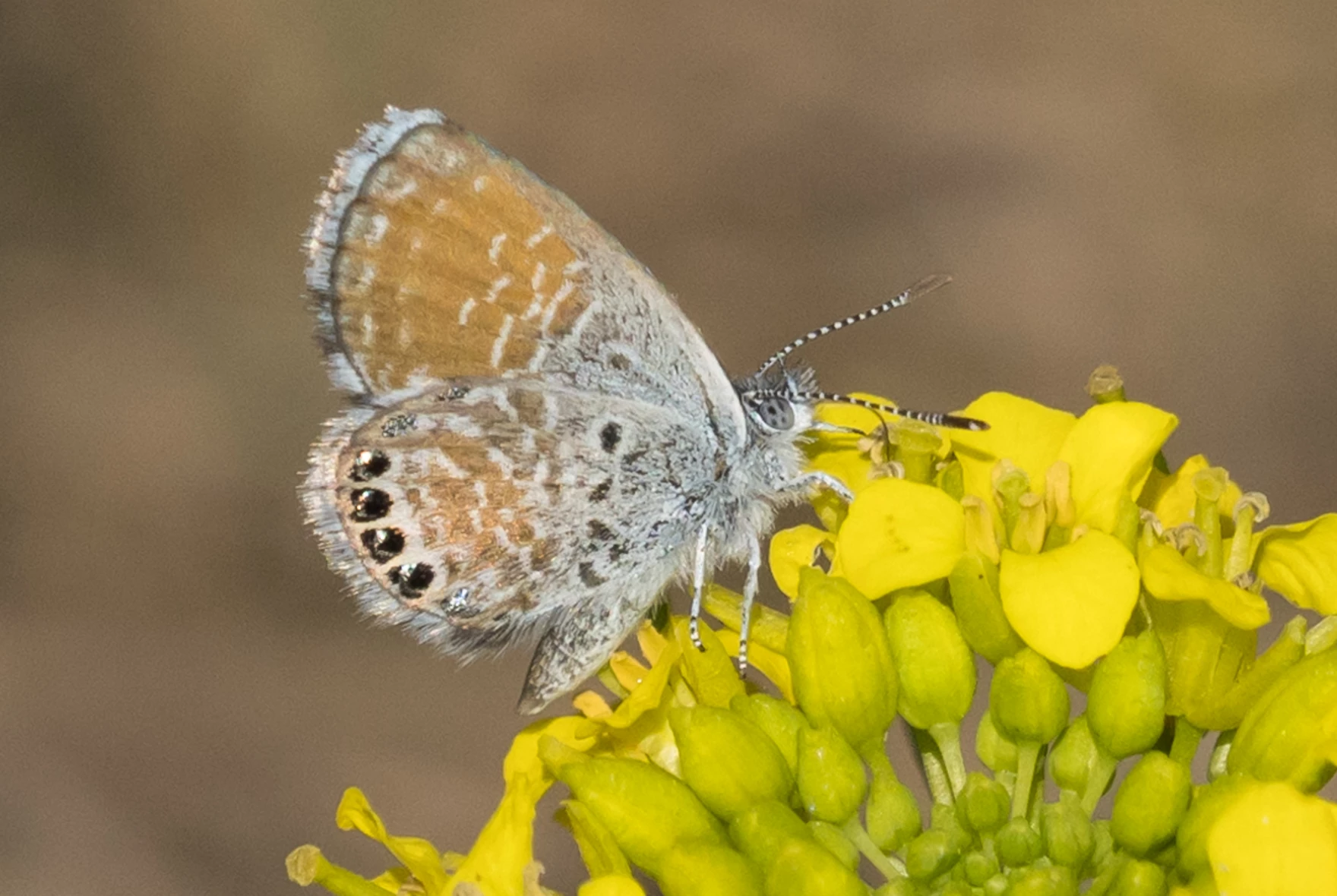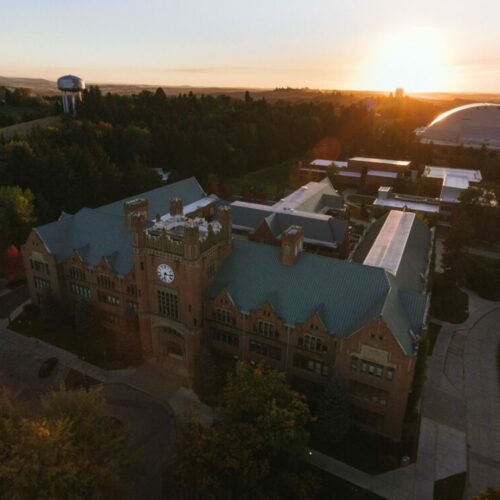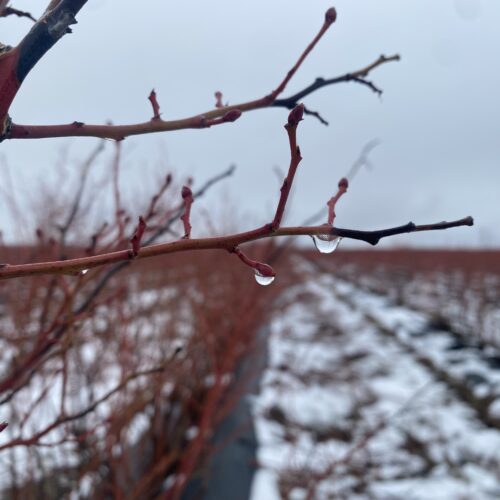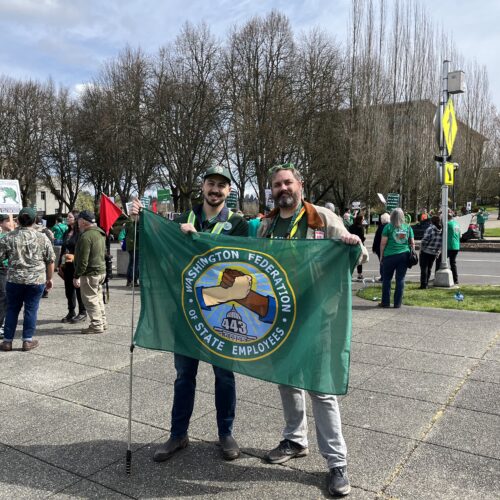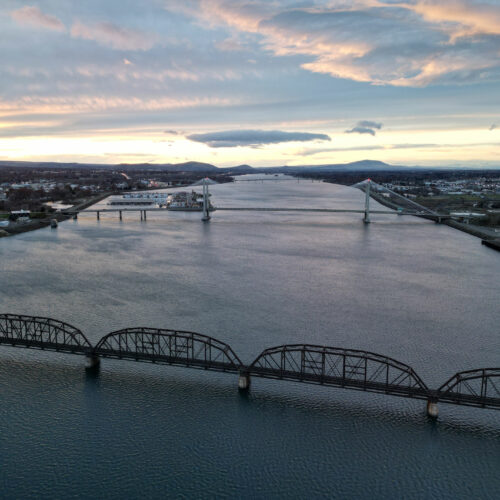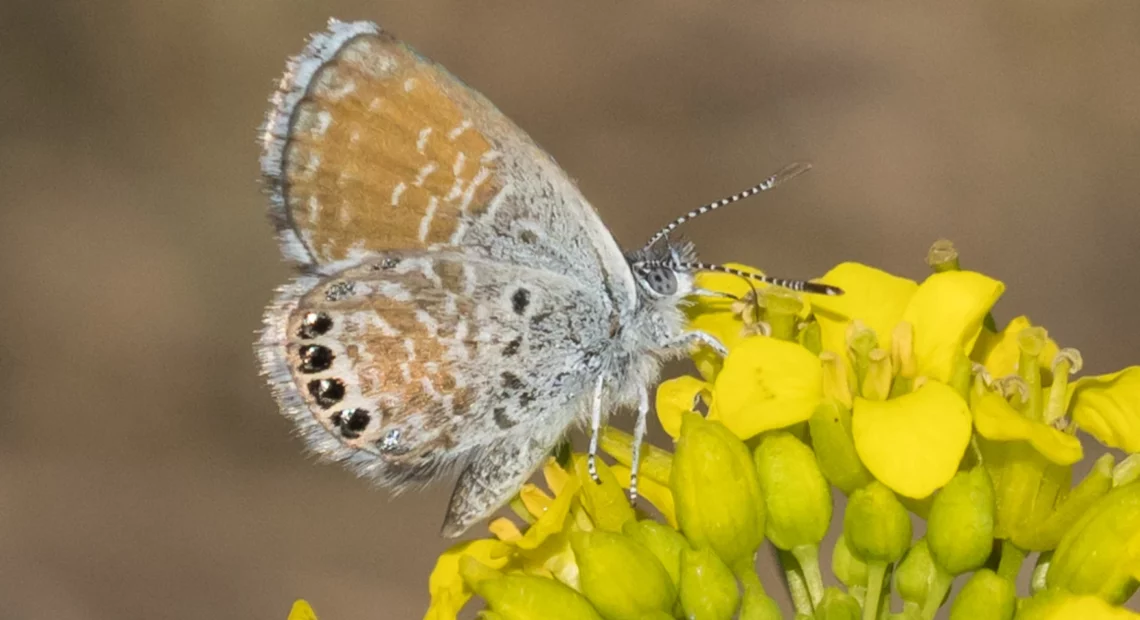
‘It’s an invasion.’ North America’s tiniest butterfly spotted in Southeastern Washington
Listen
Russian thistle is the bane of gardeners, but a boon to a tiny butterfly that’s rarely seen in Washington. People are spotting these butterflies in some unusual places. Correspondent Courtney Flatt headed out to find some butterflies and has this story. (Runtime 4:00)
Read
This particular adventure begins with the search for a bird. However, like many discoveries that venture a bit off course, birder Chris Lindsey found something much more interesting: a Western blue pygmy butterfly. The smallest butterfly in North America.
Lindsey was in an area Sept. 3 north of Walla Walla he usually didn’t hike through, when he first spotted the tiny butterfly. He’d ended up whacking through a bunch of tumbleweeds and shrubs when he noticed the butterfly – its tale-tale wingspan smaller than a thumbnail.
“I was walking through this habitat that was like the worst of habitat. It was just highly disturbed and had a whole bunch of weeds growing. It’s an area that nobody would really look for butterflies,” Lindsey said.
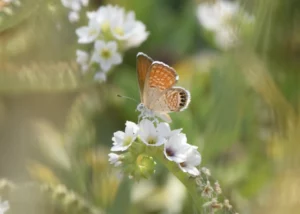
One of the first photos Chris Lindsey took this fall of a Western pygmy blue butterfly in Washington. CREDIT: Chris Lindsey
Lindsey had seen plenty of Western pygmy blues during his time in pharmacy school in Southern California. The butterflies are found across the Southwest year round, including in parts of Texas, New Mexico, Arizona, and Southern California. The Western pygmy blues expand their range in the spring and summer, often flying as far north as Southern Oregon.
Entomologists said they’re not sure how this range expansion occurs. Perhaps winds carry the butterflies north, said David James, an entomologist with Washington State University.
Lindsey had read enough field guides to know a Western pygmy blue sighting this far north could be something quite special. So, he snapped a few photographs and began asking around.
Fellow butterfly enthusiasts told Lindsey the Western pygmy blue he spotted is a Walla Walla County record.
“At that point, I was like, ‘OK, this is probably a more notable sighting,’” Lindsey said.
Turns out, Western pygmy blues have shown up in this region from time-to-time, James said. In 2004, the first Western pygmy blue was spotted just on the Washington side of the Columbia River.
However, they’ve never shown up in quite the numbers butterfly enthusiasts are seeing this fall. Since Lindsey’s initial report, butterfly spotters have noted around 30 more places where the butterflies have been found, James said.
“Reports have come in thick and fast during the last four weeks. We now have locations all along the rivers, interestingly,” James said, including the Snake, Columbia and Yakima rivers.
Reports of these burgeoning butterflies have rolled in from Walla Walla, the Tri-Cities and Klickitat County.
James noted one of the largest populations is along a dirt road just near Richland, Washington.
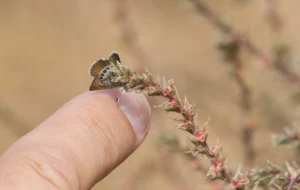
The tiny Western pygmy blue butterflies are smaller than a fingernail, making them sometimes difficult to spot. CREDIT: Jane Abel
On a shoulder scattered with noxious Russian thistles, better known as tumbleweeds, the Western pygmy blues have dazzled entomologists and brought insect-watchers from far flung towns to the banks of the Yakima River.
“Western pygmy blues really love hot, dry places and conditions. They choose horrible places to live. Not pristine habitats like most butterflies, where you have to go to the mountains or somewhere really nice to see them. To find the pygmy blue, you just pick the worst bit of land you can find as long as there’s the weeds that they like,” James said.
At this spot along Snively Road, James said he counted at least 190 butterflies over a 30-minute Pollard walk, which is a method of systematically surveying butterflies. Most of the butterflies James counted were males, which he said means a similar number of females are likely hidden nearby.
“It’s an invasion, really,” James said. “I think what’s happened is that this expansion of range happened in July or August, and nobody noted.”
That probably means several generations have grown and continued to expand in the area, James said. The Western pygmy blue’s lifespan is roughly three weeks long, depending on the temperature outside.
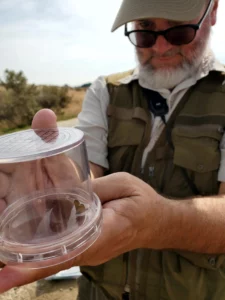
Dan Dunphy looks at a Western pygmy blue butterfly he caught with a net. CREDIT: Cathy Clark
There’s a chance that this butterfly species will be helped by a changing climate as its range is able to expand, unlike most butterflies that will see their range shrink with warmer summers and winters, James said.
“We know it expands its range every year into territories that it can’t overwinter in and comes back the following year. So I suspect that’s what will happen,” James said. “In the future when our winters are a bit warmer, they probably will survive. But, I don’t think it that time is yet.”
However, James said he plans to watch for the butterflies this upcoming spring.
Butterfly enthusiast Dan Dunphy, 60, traveled from Kent to Snively Road to see the Western pygmy blues on a field trip with the Washington Butterfly Association. The trip was his first time seeing the teeny insects.
“At first, I thought I was just looking at flies. They were just small and appeared black. They were moving so fast,” Dunphy said.
Once he got used to seeing the butterflies, he settled in and zoomed in on the perched butterflies with his binoculars.
“Then, I could step back and watch all of the butterflies flitting around, doing their thing, living their life,” Dunphy said.
As he watched, Dunphy said he observed the beauty of the tiny creatures. Perhaps poorly named, the Western pygmy blues are more visibly brown in color.
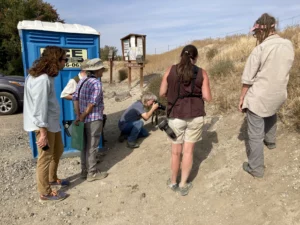
Members of the Washington Butterfly Association watch Western pygmy blue butterflies near a porta potty. Entomologist David James (center) took 14 butterfly enthusiasts on a tour of an area near Richland, Washington, that guaranteed sightings of the butterflies. CREDIT: Melanie Weiss/ Western Butterfly Association
“To actually see it in person: the color, the texture. They have shiny spots on their outer hind wings that look like little mirrors. Just scores of little mirrors reflecting the light. A very stunning butterfly, even for such a small, small, small insect,” Dunphy said.
When viewed without binoculars, the butterflies have a slightly rusty color. However, in macro-lens photographs, the blue becomes more visible, said Jane Abel, a photographer who daily walks along the Columbia River with her husband looking for the butterflies.
At Snively Road, one tumbleweed appears to be a particularly attractive home for the Western pygmy blues: a shrub directly behind a lone porta potty.
“Here’s the magic tumbleweed, behind the ACE porta potty,” Abel said. “There are multiple butterflies flying all around the bottom of the tumbleweed. There are probably a dozen of them on this one plant.”
The tumbleweed is much larger than other nearby Russian thistles. The butterflies are likely attracted to the moisture, as well as nectar from the tumbleweeds. However, it’s not just that, James said. The males get nutrients from urine and other minerals and salts.
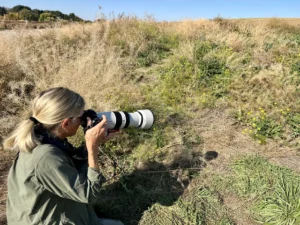
Jane Abel takes pictures of Western pygmy blue butterflies on Snively Road.
“Ground near porta potty might be more rich in those minerals and salts and then elsewhere,” James said. “It sort of just fits in with the fact that this butterfly doesn’t really like pristine habitats. You choose the porta potty place to find the butterfly. Just sums it up, really.”
Looking up the hill by the porta potty, which doesn’t smell at all, butterflies flitter all around the healthy tumbleweeds.
“Look at them all,” Abel said.
As sandhill cranes flew overhead, Abel snapped a few photographs of butterflies on a mustard plant, better to see the differences in color, she said.
As long as the butterflies are here, Abel said she’ll keep coming back to Snively Road.
“This is probably my new favorite place,” she said.
Related Stories:

Bonneville Power Administration could be losing money because of contract handling, federal audit says
The McNary Dam in Umatilla, Oregon. The Bonneville Power Administration’s Fish and Wildlife program works to lessen the impact of Columbia River Basin dams on wildlife. (Credit: Pacific Northwest National
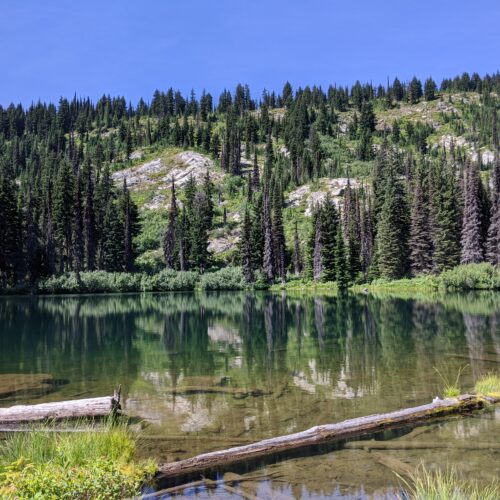
More than $30 million in restoration projects taking place in North-Central Idaho
This photo from August 2020 features Rocky Ridge Lake, a popular hiking and camping site in the Nez Perce-Clearwater National Forests. (Credit: Lauren Paterson / NWPB) Watch Listen (Runtime 1:03)
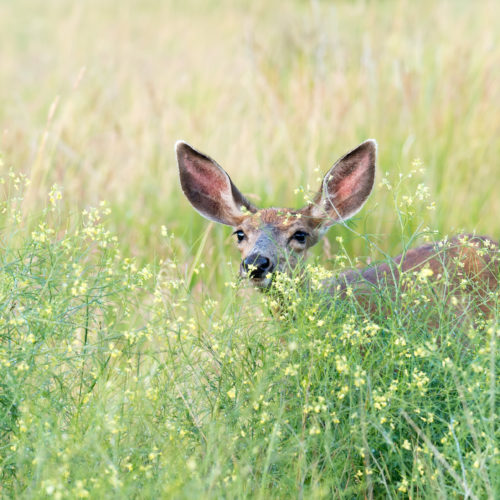
Fatal deer disease found in Washington for the first time
Mule deer in tall grasses and forbs, Iwetemlaykin Heritage Site, Wallowa Valley, Oregon. (Credit: Leon Werdinger / Alamy Stock Photo) watch Listen (Runtime 0:59) Read A fatal disease for deer

